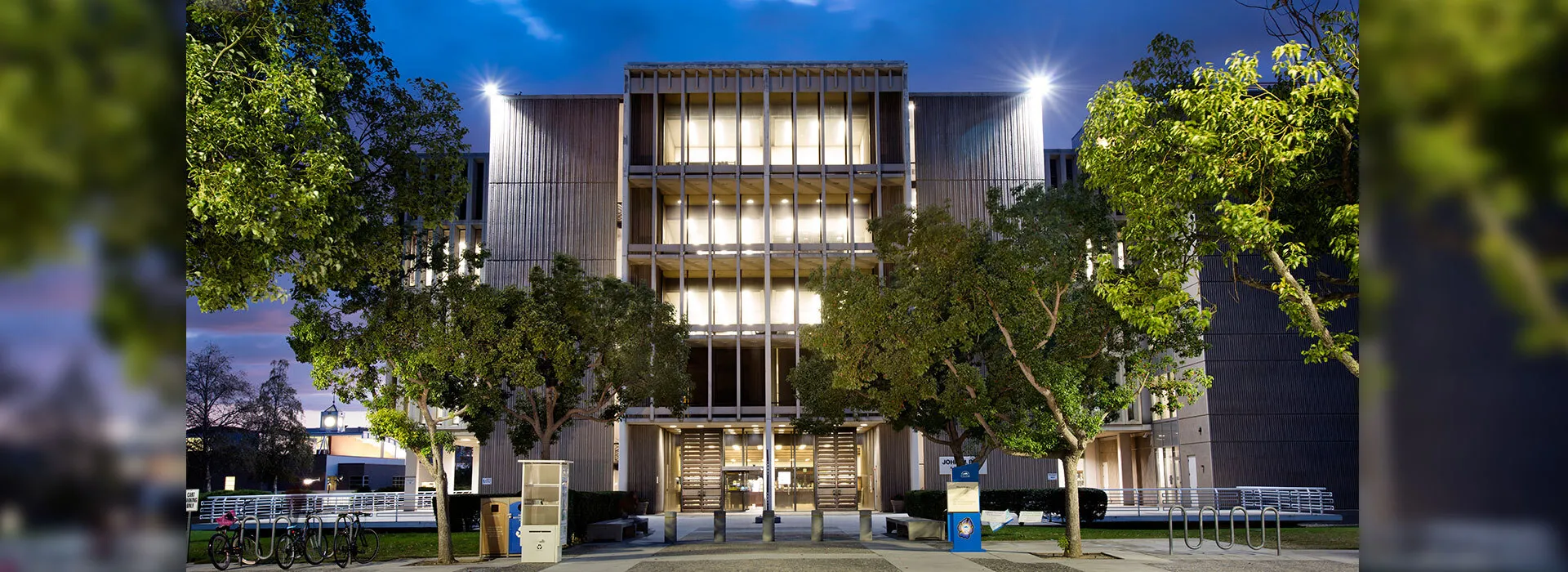
Neurofeedback, a non-invasive technique that can reduce or eliminate symptoms of Attention Deficit Hyperactivity Disorder, post-traumatic stress disorder, anxiety and other conditions including pain management, will be the focus of an open house at Cal State San Bernardino on Wednesday, Sept. 28.
The Institute for Research, Assessment and Professional Development in the university’s College of Education building will open its doors from 4-7 p.m. to the public on the use of neurofeedback, also known as cognitive rehabilitation, a powerful brain-based technique that has been successfully helping clients around the world for more than 30 years.
Refreshments will be provided during the open house. Complimentary parking will be available for the open house. Guests will be able to receive a parking pass at any one of the 13 parking dispensers on campus by entering the parking coupon code 5475453 and be able to park in any general space, including at new parking lot N located next to the College of Education building.
Participants will have the opportunity to try out neurofeedback, said Connie McReynolds, a licensed psychologist and the director of the institute. McReynolds, who is a professor of rehabilitation counseling, established the neurofeedback service in 2011.
“Neurofeedback works by training the brain to function at its maximum potential, which is similar to the way the body is exercised, toned and maintained,” said McReynolds. “The technology is safe and effective for children and adults. Users will be able to train their attention, decrease anxiety or depression, alleviate chronic pain and lessen behaviors that interfere with living your best life.”
Since opening, the institute has worked with more than 500 people from ages 5 to 83. Their clients include: children, who have ADHD, oppositional defiant disorder, learning disorders, behavioral disorders; military veterans, who have served in war zones from Vietnam to Iraq and Afghanistan, who have PTSD, anxiety, anger, depression and sleep disorders; and individuals who have pain management challenges such as fibromyalgia.
Overall, the people who completed the neurofeedback program reported improvements. For children at home and at school there are reports of improvements in attention, memory, focus and behavioral interventions.
Veterans reported improved relaxation, decreased anger responses, improved sleep and improved attention and focus, and individuals with pain management challenges reported significant reduction in the need for pain medication.
Neurofeedback has also been helpful in assessing auditory and visual processing disorders that are often missed with the diagnosis of ADHD and that do not typically respond to medication interventions, McReynolds said.
Some of the successful testimonials include:
- An eight-year-old boy who received neurofeedback for ADHD reported that he is “able to concentrate better” on his school work. Parents and teachers noticed the boy is more focused and able to complete his work more efficiently.
- A 24-year-old man coming in for ADD, reported that neurofeedback has “been (a) pivot point” for him and that he can now 'catch himself becoming distracted.' He also reported greater focus and attention, especially while driving, and that he is also able to moderate his moods better, as he 'used to be quicker to outburst'.
- A 14-year-old girl with ADHD reported her grades improved and she is now getting A's more consistently. She also reported that she used to hate reading, but since Neurofeedback she has developed an enjoyment of reading.
- A 12-year-old boy with anxiety, frequent extreme outbursts, breaking things and yelling, can now moderate his anger and respond more appropriately to situation, according to his mother. As an example, prior to neurofeedback a trip to the dentist was so stressful that the boy had to be anesthetized for any procedure. On a recent trip, the visit was easy both in and out with no fuss.
- And a 47-year-old woman coming in with anxiety noticed that her road rage behaviors decreased significantly. She also noted that she is now more aware of her emotions and behaviors.
Neurofeedback is also used to enhance peak performance in a variety of situations such as sports performance and work performance, McReynolds said.
For more information about the open house and the CSUSB Institute for Research, Assessment and Professional Development, contact Connie McReynolds at (909) 537-5453 or email cmcreyno@csusb.edu.
Also visit the Institute for Research, Assessment and Professional Development neurofeedback website.
Set in the foothills of the beautiful San Bernardino Mountains, CSUSB is a preeminent center of intellectual and cultural activity in inland Southern California. CSUSB serves more than 20,000 students each year and graduates about 4,000 students annually. CSUSB is listed among the best colleges and universities in the western United States, according to The Princeton Review, Forbes and U.S. News and World Report.
For more information on Cal State San Bernardino, contact the university’s Office of Strategic Communication at (909) 537-5007 and visit news.csusb.edu.